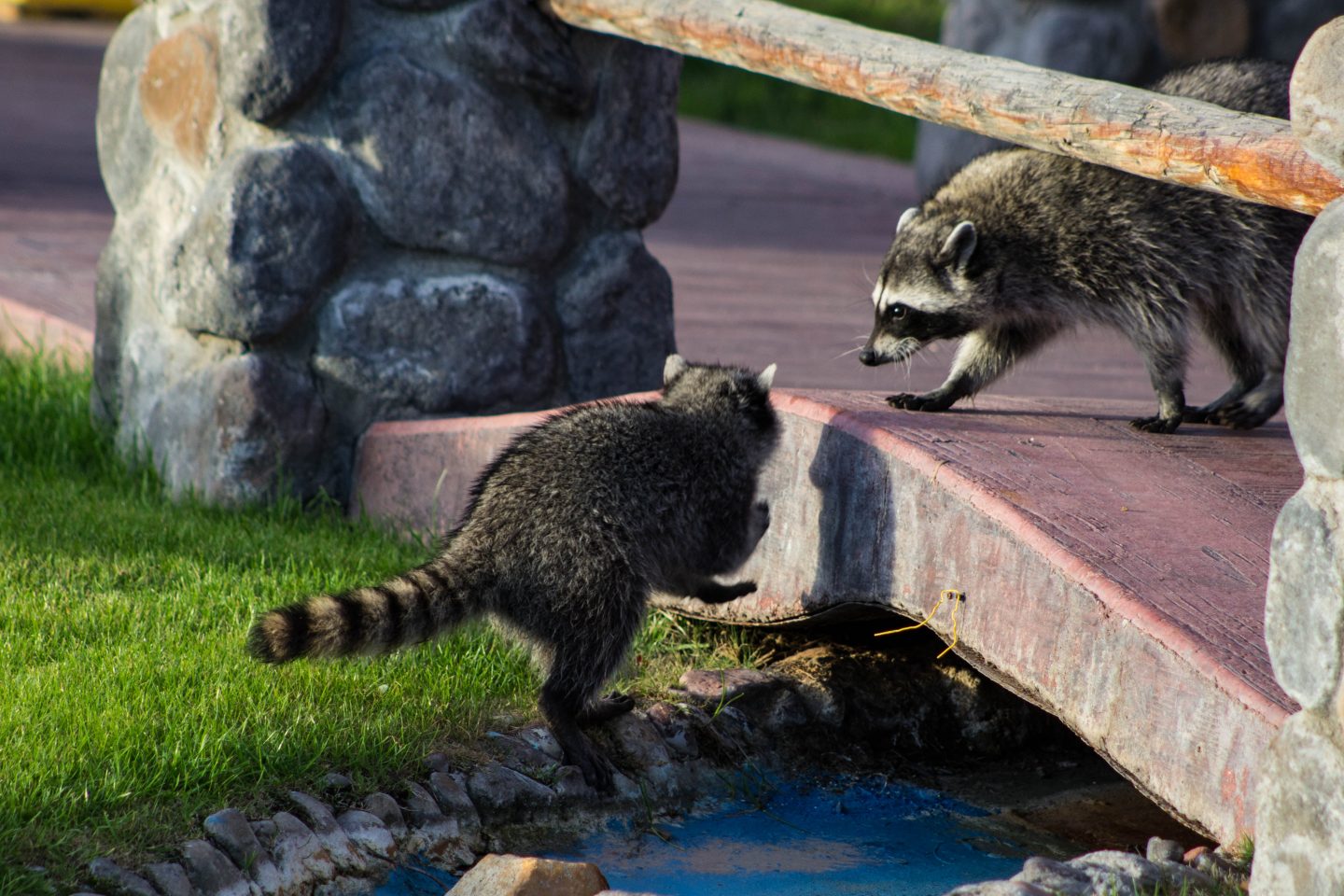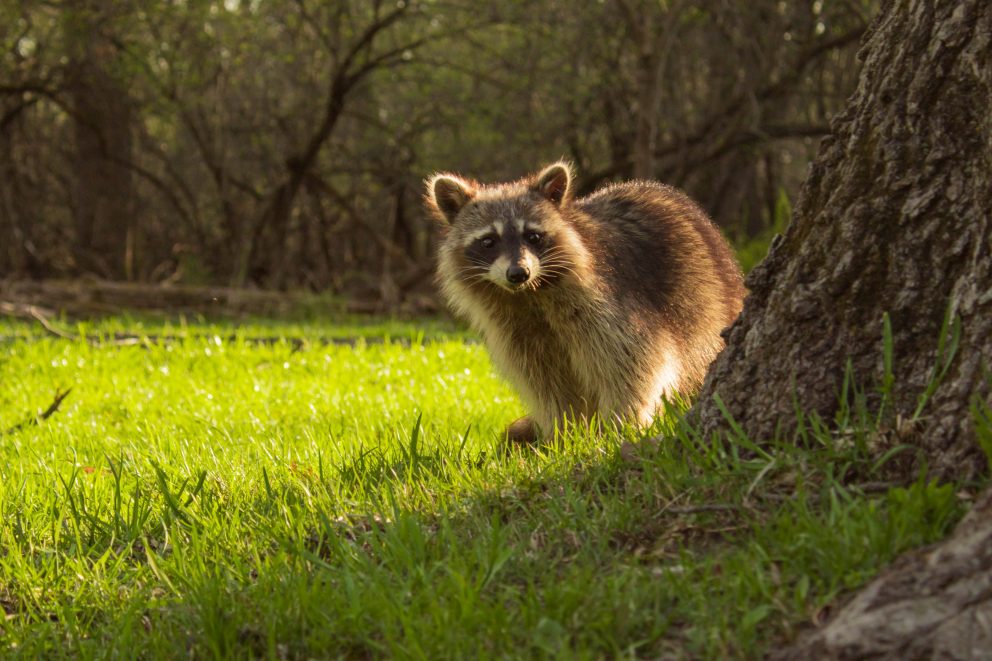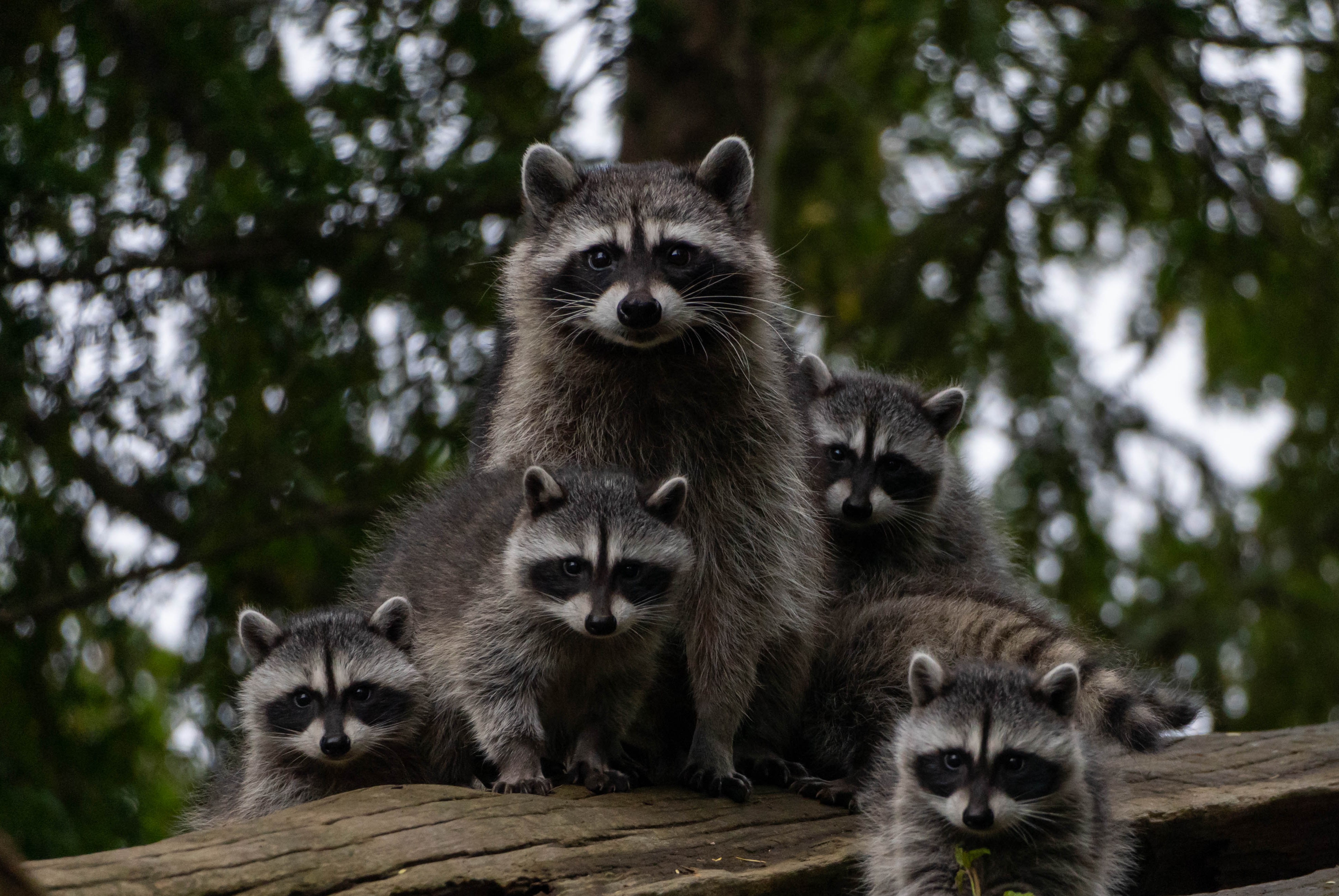- SCIENTIFIC NAME
- Procyon lotor
- CLASSIFICATION
- Mammal
- LIFE SPAN
- 2-5 Years
- SIZE
- 24-37” | 4-23lbs
- STATE CONSERVATION STATUS
-
- Unprotected
- FEDERAL CONSERVATION STATUS
- Least Concern
- GAME STATUS
- Game
- GAME TYPE
- Furbearer
- Washoe
- Humboldt
- Pershing
- Churchill
- Mineral
- Lyon
- Douglas
- Carson City
- Storey
- Elko
- Lander
- Eureka
- White Pine
- Esmeralda
- Nye
- Lincoln
- Clark
Habitat & Range
The adaptability of the Raccoon gives them plenty of options when it comes to suitable habitat. However, they prefer forested areas near water sources that offer plenty of food and lots of holes in which they can make a den. They are no stranger to cities, however, and can easily find a place to live.
- Agricultural Lands
- Developed Landscapes
- Rivers and streams
Threats
- Disease
Natural History

A Raccoon’s diet is made up of a diverse range of plants and animals, even residents’ trash can unintentionally provide for a Racoon (situations such as this can be dangerous and we recommend never feeding or providing for wildlife). Breeding season occurs from December to August and females typically have one litter per year with three to seven young. Racoons are typically inactive during the day and will stay in their den to avoid predation.
Fun Facts














